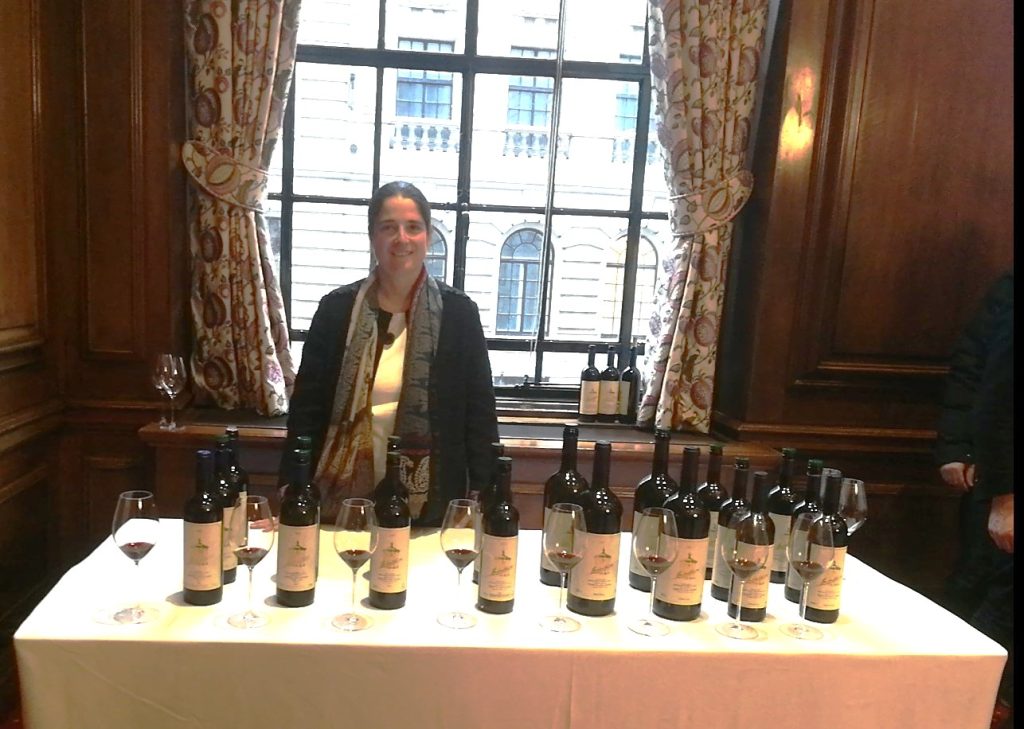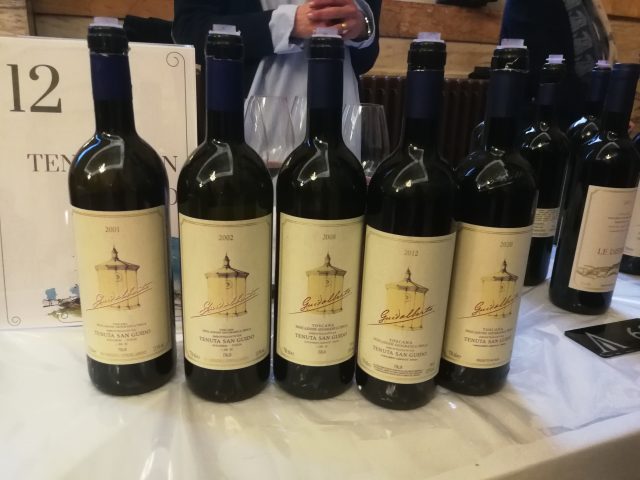This website uses cookies so that we can provide you with the best user experience possible. Cookie information is stored in your browser and performs functions such as recognising you when you return to our website and helping our team to understand which sections of the website you find most interesting and useful.
Tenuta San Guido: Guidalberto ‘no longer in Sassicaia’s shadow’
Tenuta San Guido, the Super-Tuscan producer best known for Sassicaia, has hailed the “super classic” 2021 vintage of its younger wine brand, Guidalberto, which it says is building a reputation outside the shadow of its more famous sibling, with a new winery in the pipeline.

Brand manager Priscilla Incisa della Rocchetta, a third-generation member of the family-run Tuscan estate, presented the 2021 vintage at a special vertical tasting at UK importer Armit Wines’ recent Italian portfolio tasting .
Introducing the wines, Incisa della Rocchetta said that Guidalberto had been in the shadow of Sassicaia until “quite recently”, but the wine had now acquired its “own status”, being recognised with a unique style in its own right.
The estate, which is based in coastal Tuscany outside the village of Bolgheri, is working to clearly separate and differentiate the estate’s three wine brands – Sassicaia, Guidalberto and its “gateway” wine, La Difese – and this month work will start on a new winery devoted entirely to Guidalberto, which is due to be operational by 2025-26.
As Carlo Paoli, general manager of Tenuta San Guido pointed out in a press release, the estate wants to “shift the focus from a comparison with Sassicaia” and it was for this reason that the Guidalberto was given its own separate press tasting, a month after the new vintage of Sassicaia and La Difese was presented.
They are, he said “two first wines… a different expression of the same territory”. So although the Guidalberto may help give a “picture” of the corresponding Sassicaia vintage, it has a different personality, embracing a younger style of wine, he said, “a wine with a clear temperament that faithfully interprets its territory of origin.”
The wine was first launched in 2000 and has following a not dissimilar trajectory to its more famous sibling, Incisa della Rocchetta, said, pointing out that Sassicaia had itself been “experimented” on at home for over twenty years. (It was originally reserved as a blend for family and friends, before her grandfather was persuaded to launch it into the market in 1971).
“It takes a long time, [Guidalberto] was never pushed with its own label, it was a slower process, but maybe now it has acquired its own status, rather than us trying to put it into some kind of box,” she explained.
It is, she said, “a wine you can enjoy, maybe not every day, but more frequently than Sassicaia. It can appeal to people who are maybe intimidated by Sassicaia in some way, and they feel that they can get closer to a different angle.”
Nicolas Clerc MS, wine buyer at Armit, said the 2013 vintage was the vintage in which “we discovered the character and identity of Guidalberto”, but pointed out that “even with harvests as difficult as 2017, you can see the tension, the tannin structure”.
“To me a lot of people think it is modern cos of the Merlot, but it is very much a classic European style,” he said.

And the 2021 vintage is an auspicious vintage, a “super classic year, where it all happened at the right time”, Incisa della Rocchetta said.
The year was characterised by a good amount or rainfall, no excessive heat and light winds, combined with a late spring that had seen a positive effect on bud development – a natural thinning process leading to “an optimal load of grapes on the plant”, Paoli noted, leading to good development of the berries. Excellent weather conditions around the harvest helped ensure an “excellent balance” in technical and phenolic maturity, “a perfect situation not seen since the 2016 vintage”, he noted.
The 2021 assemblage also returns to the classic 60% Cabernet Sauvignon/ 40% Merlot blend after the “strange” vintage of 2020, which saw a greater proportion of Merlot (around 60%, Paoli said) after the growing season started of very cool but subsequently warmed up towards the end, resulting in a favourable year for Merlot).
Incisa della Rocchetta agreed that the 2021 could be compared to the classic vintages of 2016 and 2019, with the same long ageing potential. “As we have seen today, we are discovering that Guidalberto has a long ageing potential,” she said. “The 2001 was still perfectly fresh, so why not 15-18 years, even 20, depending on the vintage?”
One of the keys to the wine’s freshness lies in the estate’s position.
“We are exposed to sea winds through the year, which has the ability to provide tension and freshness,” Incisa della Rochetta explained, adding that the Cabernet is planted on the higher slopes, with the Merlot on the more clay soils lower down.
It is this positioning, along with the surrounding forest, that appears to be helping mitigate the danger of climate change even in the warmer vintages, at least for now.
The situation is being monitored closely, but so far Incisa della Rochetta is not worried. “We don’t seem to have a problem for now,” she explains. “We try to harvest earlier, which could be a good trick, but we also need canopy on the plant to give some shade. And the fact that we are surrounded by forest helps – we also have the exposure from the sea, the sea winds help to create a good temperature difference between night and day. So it’s manageable – even in a year like 2012 or 2017, it’s not too extreme, and even with a warm vintage, you still get that freshness.”
The vertical comprised wines from 2001, 2002, 2008, 2012, 2013, 2017 and the 2020 release alongside the new 2021 vintage.
Related news
Glenfiddich becomes official partner of Aston Martin F1 team
Spain 'needs to learn how to market our fine wines', producer claims
Bourgogne wine see global growth despite difficult market conditions

